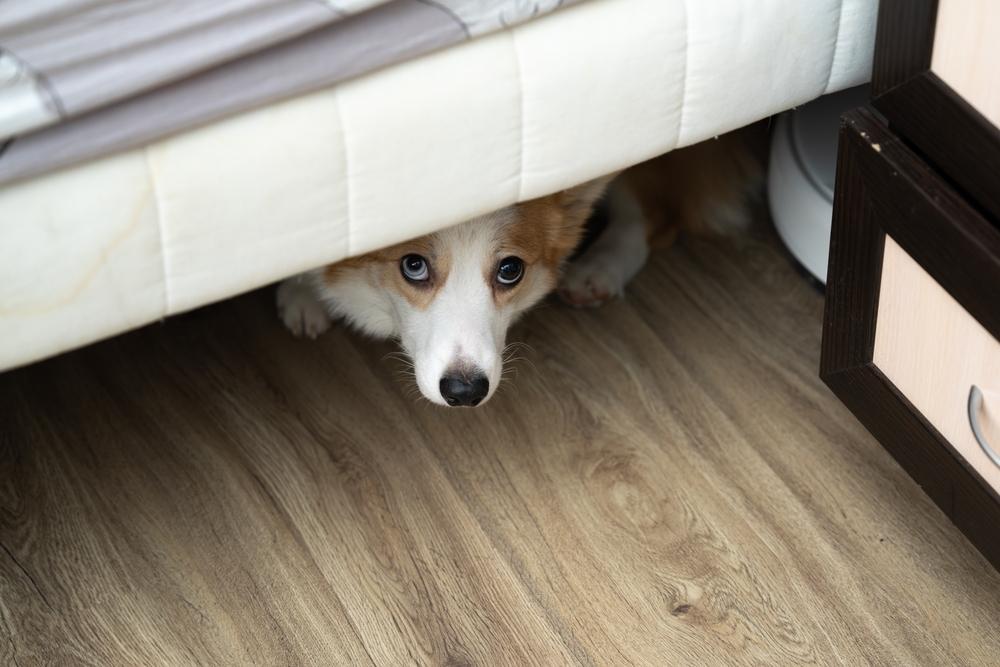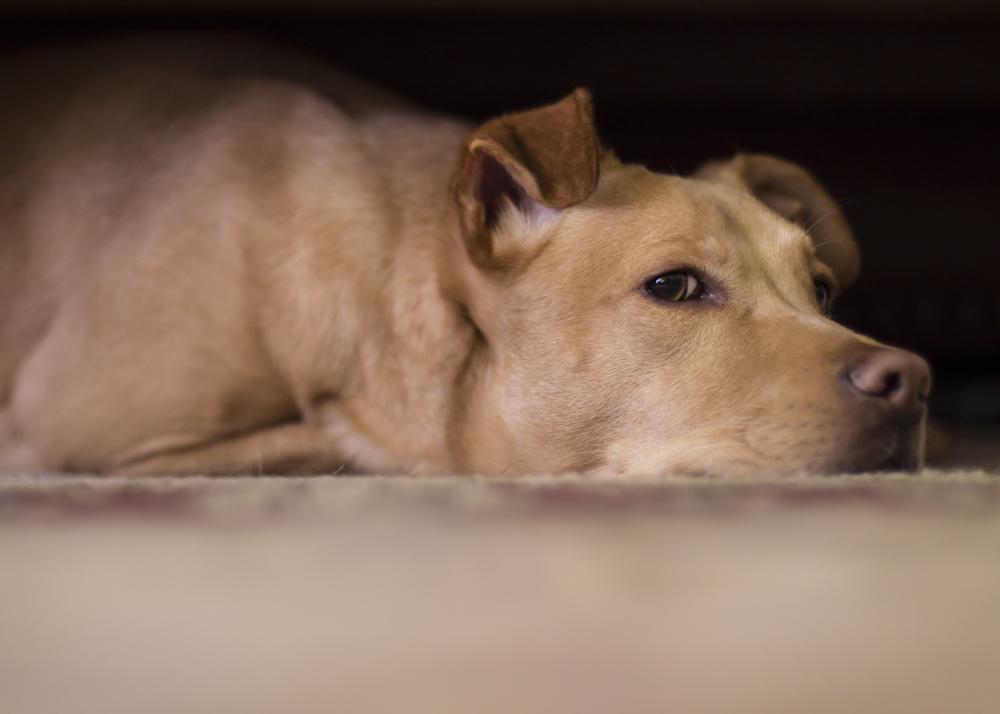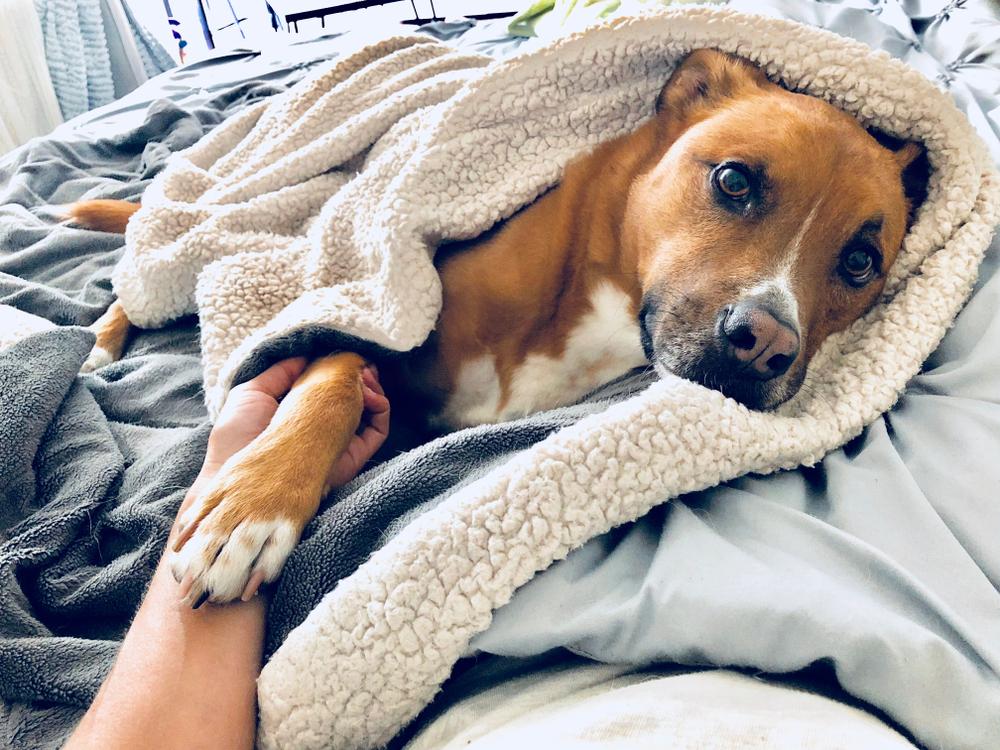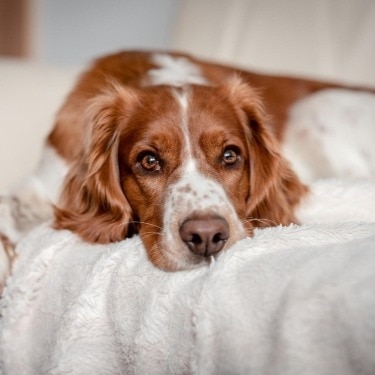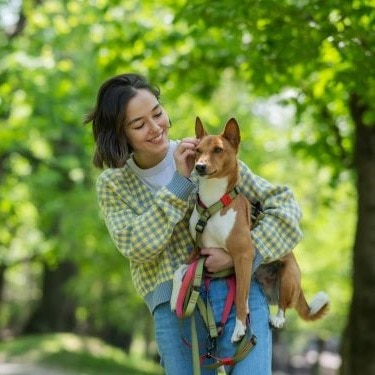

Is your dog scared of thunder? Noise phobias, like fear of thunder or fireworks, are one of the most common behavioral challenges dog parents face. Based on consultations with behaviorists, around 20% of dogs are afraid of thunder, but in surveys, pet parents report even higher numbers. In one study, more than 43% of surveyed pet parents said they have a dog scared of thunder. If you're one of many pet parents looking to soothe your pup's distress, read on to learn how to help a dog scared of storms and what you can try to help calm your pet.
Why Do Dogs Get Scared of Thunder?
Why are dogs afraid of thunder? Many factors, often in combination, might be to blame for your dog's fearful response. While one environmental change might not bother your dog, the more "scary things" they encounter, the greater the probability you'll have a dog scared of thunder on your hands. Here are some potential contributing factors.
Noise
Dogs have a keen sense of hearing. Thunder's sounds vary from a low, distant rumble to a sudden crack overhead, sometimes without warning. Whistling wind and pounding rain — and, sometimes, hail hammering on the roof — are all loud noises associated with storms. This myriad of unpredictable sounds can make some dogs feel afraid.
Dogs can become more sensitive to noise with age. However, some elderly dogs may show fewer signs of fear associated with thunder due to reduced hearing.
Associated Environmental Changes
Your dog might be reacting to environmental changes associated with storms. For example, some dogs may become uneasy when they see a flash of lightning, likely because they've come to expect thunder to follow. Thunderstorms also shift atmospheric pressure, and dogs can feel and respond to these changes. Your dog might've learned that low pressure can lead to thunder, causing them to feel nervous when they sense a shift. Additionally, heavy winds associated with thunderstorms can carry new scents that could put your dog on edge.
Negative Associations
If your dog had a frightening experience during a storm (e.g., a tree fell on the roof), subsequent storms may prompt memories of this event, triggering fearful behaviors.
Copycat Behavior
Dogs are social animals and may copy other dogs' behaviors or even sense your fear. In fact, the analysis in Applied Animal Behaviour Science showed when pet parents were afraid of storms, their dogs were also more likely to be afraid. It's important to stay cool, calm and collected during a thunderstorm to encourage your dog to behave the same way.
Inherited Tendencies
Just like physical traits, dogs can inherit fearfulness from their parents. According to Dr. Stanley Coren, Ph.D., DSc., FRSC, dogs may also come prewired to detect scary things, like the scent of predators or sounds that predict danger. This may explain why hunting breeds — who are purposefully bred to tolerate the sound of loud gunshots — might react less to thunder, while herding breeds, like sheepdogs, may be more prone to noise phobias.
Signs Your Dog Is Afraid of Thunder
Dogs may show one or more signs of stress when they're afraid of something, including thunder. Look out for these dog behaviors that can indicate your dog is feeling afraid before and during a storm:
Pacing or restlessness
Shaking and trembling
Tucking their tail, putting their ears back
Vocalizing (whining, crying, whimpering, howling)
Hiding in confined spaces (under the bed, behind furniture)
Crouching or moving low to the floor
Drooling
Panting
Trying to escape
Wetting
Licking excessively
How to Calm a Dog Scared of Thunder
If you notice any of the signs mentioned earlier, you might wonder: What to do if my dog is scared of thunder? Your veterinarian can provide suggestions based on your dog's needs. In the meantime, here are some general tips for how to help a dog afraid of thunder. Every dog is unique, so you may need to experiment with different methods before finding what works for your pup.
Offer Comfort
Comfort can't worsen fear, so don't ignore your dog's distress. If your dog wants to snuggle in your lap or hide their face in your arms, let them. Speak in a calm, soothing voice and provide gentle, steady pets.
Be a Role Model
Dogs pattern their behavior after other dogs — and the people they love. Keep yourself calm before and during thunderstorms.
Build a Positive Association
Before your dog shows signs of distress, try throwing a thunder party. Each time the thunder sounds, smile and offer a healthy treat, saying "Wow, that was a fun, loud bang!" (or something along those lines) in a high, cheerful voice. This works particularly well with young dogs to help build positive associations.
Provide a Safe Hiding Spot
Dogs instinctively seek out snug places — like under blankets or your armpit — to self-soothe. Many dogs squeeze behind or under furniture because the close quarters help them calm down. Try closing your dog in a snug crate with a cozy bed to help them feel secure and protected.
Muffle the Noise
The study in Applied Animal Behaviour Science suggests dogs living in apartments have less thunder phobia than dogs living in houses, possibly due to differences in construction. (Apartments are often sound-proofed to avoid infringing on neighbors.) So, sound-proof your space with white noise machines or music designed to calm dogs before the storm begins.
You can also try ear muffs designed for pups, but you'll need to teach your dog to tolerate them comfortably before the storm.
Try a Snug Vest
Try a calming vest, or "thunder shirt," specifically designed for dogs scared of thunder. They work by giving dogs a snug hug, which helps some dogs feel more secure. Like ear muffs, try calming vests ahead of storms to help your dog develop a positive association with them.
Release Calming Pheromones
Mother dogs produce calming pheromones that help puppies feel safe. These pheromones also work on adult dogs, triggering a "mental reset" that can help comfort frightened pups. You can find various pheromone products, including plug-in diffusers, sprays and collars, to help your dog feel calm.
Seek Veterinary Help
Extreme or repeated stress can have a long-term effect on dogs mentally and physically. If you've tried these suggestions and your dog is still experiencing fear associated with thunder, visit your veterinarian. They may offer additional recommendations, prescribe a medication or recommend a supplement to help calm your dog.
Reducing the Fright Factor
Unfortunately, there's no cure for a thunder-phobic dog. However, you can learn to recognize the warning signs and help reduce the fright factor by calming your dog before and during noisy or otherwise scary storms. Over time, this can help them learn they're safe in your company no matter what life brings.












